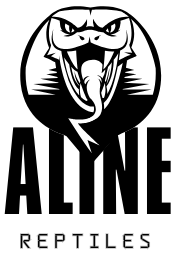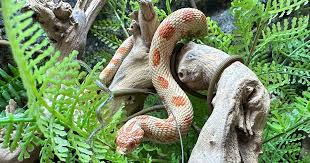Imagine a snake that acts like a cobra, plays dead like an opossum, and burrows like a mole—all in one! The hognose snake is one of the most fascinating and misunderstood reptiles in the world. Known for its dramatic defensive displays and quirky personality, this snake thrives in specific environments that cater to its burrowing nature and diet.
Whether you’re a reptile enthusiast, a pet owner looking to create the perfect habitat, or just curious about these remarkable creatures, this guide will walk you through everything you need to know about the hognose snake habitat, from the wild to captivity.
Where Do Hognose Snakes Live?

Geographical Range
Hognose snakes are primarily found in North America, with different species inhabiting various regions:
| Species | Geographic Range |
|---|---|
| Eastern Hognose Snake (Heterodon platirhinos) | Eastern U.S., from Florida to southern Canada |
| Western Hognose Snake (Heterodon nasicus) | Central U.S., from Canada to northern Mexico |
| Southern Hognose Snake (Heterodon simus) | Southeastern U.S., including Florida, Georgia, and Alabama |
These snakes thrive in regions with loose, sandy soils that allow for burrowing, an essential behavior for their survival.
Preferred Habitat Types
Hognose snakes are highly adaptable but prefer certain environments:
- Grasslands and Prairies – Open landscapes with loose soil for easy burrowing.
- Sandy Forest Floors – Provides cover and burrowing opportunities.
- Scrublands and Woodlands – Sparse vegetation with sun exposure.
- Floodplains and River Valleys – Moist environments rich in amphibians, their primary food source.
Key Features of a Hognose Snake’s Habitat
Soil and Terrain
Hognose snakes rely on their environment to survive, and the soil type is crucial. Their upturned snout helps them dig into loose, sandy, or gravelly soils where they can hide from predators and ambush prey.
Vegetation and Climate
These snakes prefer habitats with low to moderate vegetation, which allows them to regulate their body temperature by alternating between sunny and shaded areas. Their climate preference includes:
- Warm Temperatures (70-85°F) for activity.
- Cold-season Brumation (hibernation-like state) in burrows during winter.
Hognose Snake Behavior & Adaptations in Their Habitat
Burrowing Behavior
Hognose snakes are expert burrowers, using their snouts to dig into the ground for shelter, hunting, and thermoregulation.
Defense Mechanisms
Hognose snakes have some of the most unique defensive behaviors in the reptile world:
- Bluffing – They flatten their heads like a cobra and hiss loudly.
- Feigning Death – If threatened further, they roll onto their backs, let their tongue hang out, and pretend to be dead.
- Mild Venom – While nonvenomous to humans, they have mild venom that helps subdue small prey.
What Do Hognose Snakes Eat in the Wild?
Primary Diet
Hognose snakes are primarily amphibian specialists, particularly favoring toads. They also eat:
- Small mammals
- Birds
- Reptile eggs
| Prey Type | Why They Eat It? |
| Toads | Their immunity to toad toxins makes them efficient hunters. |
| Rodents | Provides protein for growth and energy. |
| Lizards & Eggs | Easy to find and swallow. |
Hunting Techniques
Hognose snakes use a combination of ambush hunting and active foraging to locate prey, often digging them out of burrows.
Conservation & Threats to Hognose Snake Habitats

While most hognose snake species are listed as Least Concern, habitat destruction and urbanization pose threats.
Major Threats
- Deforestation & Agriculture – Reduces available burrowing areas.
- Urban Expansion – Leads to road mortality and human-animal conflicts.
- Pet Trade – While captive-bred hognose snakes are legal, wild populations suffer from illegal collection.
Conservation Efforts
- Habitat Preservation Projects
- Reptile Awareness Campaigns
- Captive Breeding Programs
Creating a Suitable Captive Habitat for Pet Hognose Snakes
If you plan to keep a hognose snake as a pet, replicating their natural habitat is key to their well-being.
Ideal Enclosure Setup
| Requirement | Recommended Setup |
| Tank Size | 20-gallon tank for juveniles, 40+ gallons for adults |
| Substrate | Sandy soil, coconut husk, or aspen bedding |
| Hiding Spots | Logs, caves, and artificial burrows |
| Temperature Gradient | 75-85°F with a basking spot of 90°F |
| Humidity | 30-50% (avoid excessive moisture) |
Feeding in Captivity
Unlike their wild counterparts, pet hognose snakes are usually fed frozen-thawed rodents, which are safer and easier to digest.
| Age | Feeding Frequency |
| Hatchlings | Every 4-5 days |
| Juveniles | Every 5-7 days |
| Adults | Every 7-10 days |
Fun & Fascinating Facts About Hognose Snakes
- They are immune to toad toxins, allowing them to eat amphibians that are deadly to other predators.
- They “play dead” dramatically by rolling over, opening their mouths, and letting their tongues hang out.
- They make great beginner pet snakes due to their docile nature and simple care requirements.
Conclusion
Whether you’re interested in observing hognose snakes in the wild or caring for one as a pet, understanding their Hognose Snake Habitat is crucial. From their love of sandy burrows to their dramatic survival tactics, these snakes are truly one-of-a-kind.
By preserving their natural environments and providing proper care in captivity, we can ensure that these amazing reptiles continue to thrive for generations to come.

